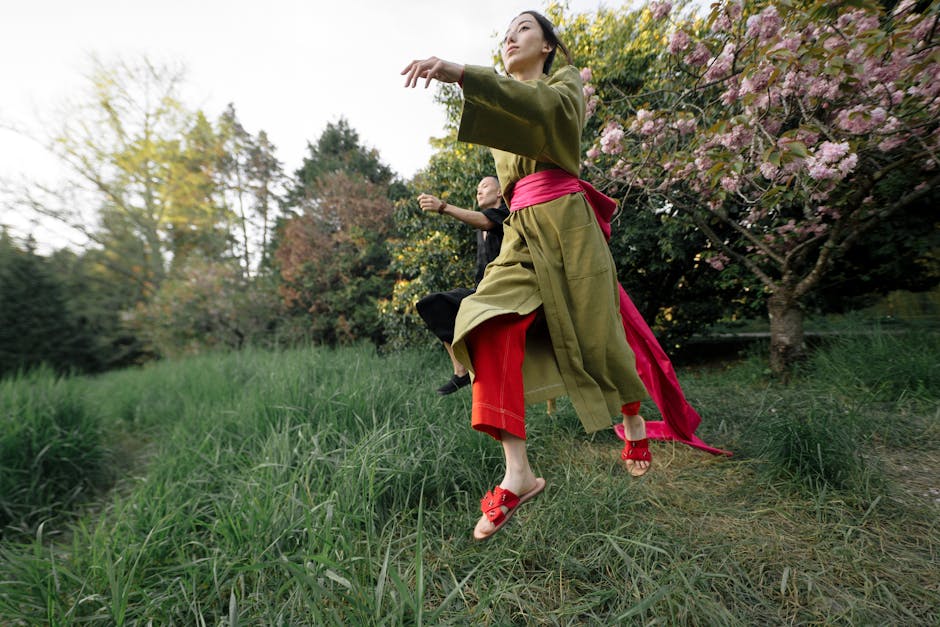Understanding haiku poetry is a journey into the heart of Japanese tradition. Haiku is a concise form of poetry that captures fleeting moments of beauty and emotion in just a few short lines. Each haiku consists of three lines with five, seven, and five syllables respectively, creating a rhythmic and impactful composition. To truly grasp the essence of haiku, one must delve into its simplistic structure, deliberate word choice, and evocative imagery.
Unraveling the Enigmatic – 27 Understanding Haiku Poetry
Whispers of Dawn
Morning sun’s gentle touch
Awakens life from slumber deep
Hope renewed, anew dawns
Rustic Memories
Forgotten farmhouse
Creaky doors, worn wooden floor
Echoes of the past
Urban Silence
City streets, empty night
Neon lights, a lonely hush
Silence amidst noise
Torrent of Emotions
Raging river of soul
Turbulent, yet pure and deep
Unbridled, I am free
Winter’s Solace
Frosty mornings, dark
Frozen world, icy grip
Solace in winter’s chill
Shores of Serenity
Gentle waves, soft sand
Seagulls cry, peaceful land
Tranquility found
Moonlit Rendezvous
Silver light, midnight air
Secrets shared, love beyond compare
In moon’s gentle glow
Timeless Melody
Echoes of forgotten past
Haunting notes, love that will last
In harmony, we sway
Whispers in the Wind
Summer breeze, warm and light
Secrets shared, lost in flight
Ephemeral, yet true
Enjoying these poems? You can also create your own poems with our Advanced AI Poem Generator.
Petals Falling Slowly
Softly drifting down
Whispers of a summer breeze
Forgotten moments
Moonlit Whisper
Shadows dance upon
The wall, a midnight song
Echoes of the heart
Whispers of Spring
Buds burst forth in green
Hope eternal, new life
Spring’s defiant song
Crepuscular Hush
Dusk descends softly
Golden light upon the sea
Peaceful evening’s sigh
Summer’s Embers
Warmth of distant fire
Fading light on distant hills
Memories abide
Sunset Haze
Golden light descends to claim
The day’s last lingering breath
Nature’s peaceful swan song
As sun dips into the sea
In a swirl of orange haze
The world is bathed in its glow
The stars begin their twinkling
As night’s dark veil is drawn**Whispers of the Wind**
Soft breeze carries secrets
Rustling leaves conspire
In a haiku’s silence,
A world of unspoken truths.
**Moonlit Waves**
Silent whispers of the moon
Ebb and flow in verse
In every cresting wave,
An untold haiku story.
**Cherry Blossoms**
Petals dance upon the breeze
Nature’s fleeting gift
Haiku blooms and fades away
Like cherry blossoms’ grace.
**Solitary Mountain**
Timeless sentinel endures
Witness to seasons
Inspiring countless words
Silent in its grandeur.
**Winter’s Breath**
Ice crystals on bare branches
Haiku hibernates
Awaiting spring’s rebirth
In each frozen heartbeat.
**Autumn’s Serenade**
Leaves crunch beneath our feet
As haiku mourns loss
Bidding farewell to green
Welcoming colors bold.
**Rippling Stream**
Haiku flows, eternally
Rebirth ‘neath the sun
Life’s cycle ever-changing
Still, it ebbs and flows.
**Thunder’s Rumble**
Stormy haiku on the horizon
Awaiting chaos
Finding solace within rage
Echoes through silence.
**Starry Night**
Poetry of heavens above
Whispers from galaxies
Haiku within each star.
**Dewdrops’ Glow**
Morning haiku in the light
Dew’s brief shining moment
An echo of serenity.
**The Wandering Wind**
Haiku wanders, lifts and moves
Evoking endless themes
A nomad’s soul embraced.
Best Popular Poems About Embracing the Beauty of Haiku Poetry
Silence in Syllables by Kaitlyn Wells
In this thought-provoking poem, Kaitlyn Wells delves into the simplicity and profundity of haiku poetry. With each carefully crafted line, she explores the silence and beauty that lies within the traditional 5-7-5 syllable structure. The poet skillfully conveys the idea that true understanding and connection can be found in the quiet, contemplative moments that haiku embodies.
Haiku Heartbeats by Lily Chen
Lily Chen’s poem is a stunning tribute to the power of haiku to capture the essence of life. Through her vivid imagery and masterful use of language, she reveals the intricate dance between nature, emotion, and the human experience. This poem is a beautiful exploration of how haiku can distill complex feelings into a few, well-chosen words.
Seasonal Soul by Akira Matsumoto
Akira Matsumoto’s poem is a poignant reflection on the seasonal nature of haiku poetry. With a deep understanding of the traditional Japanese form, he weaves together a poignant tapestry of images and emotions that evoke the changing seasons. This poem is a testament to the ability of haiku to capture the fleeting moments of life.
The Space Between by Sophia Patel
In this evocative poem, Sophia Patel explores the concept of ma, or the space between words, in haiku poetry. She masterfully conveys the idea that it is in these silences that true meaning and understanding can be found. This poem is a beautiful meditation on the power of subtlety and restraint in poetry.
Nature’s Nuances by Jackson Reed
Jackson Reed’s poem is a breathtaking celebration of the intricate relationships between nature, poetry, and the human experience. Through his exquisite language and imagery, he reveals the subtle nuances of haiku poetry and its ability to capture the beauty and complexity of the natural world.
The Five-Seven-Five by Ava Moreno
Ava Moreno’s poem is a clever and insightful exploration of the traditional 5-7-5 syllable structure of haiku poetry. With a keen eye for detail, she dissects the intricacies of this ancient form, revealing the beauty and challenge of working within its constraints. This poem is a must-read for anyone interested in the craft of haiku.
The Haiku Mind by Kai Nakamura
Kai Nakamura’s poem is a profound and contemplative exploration of the haiku mind. With a deep understanding of the philosophy and spirit of haiku, he reveals the importance of mindfulness, simplicity, and clarity in this traditional form. This poem is a beautiful tribute to the power of haiku to transform and uplift.
Syllables of Serenity by Maya Jensen
Maya Jensen’s poem is a serene and peaceful exploration of the calming effects of haiku poetry. Through her soothing language and imagery, she conveys the idea that haiku can be a powerful tool for finding inner peace and tranquility. This poem is a beautiful testament to the therapeutic power of poetry.
Breath of Life by Ethan Wong
Ethan Wong’s poem is a stunning celebration of the beauty and vitality of haiku poetry. With a keen sense of wonder and awe, he captures the essence of this ancient form, revealing its ability to breathe life into the mundane and ordinary. This poem is a must-read for anyone looking to be inspired by the power of haiku.
The Simple Beauty by Zara Saeed
Zara Saeed’s poem is a poignant tribute to the simple, yet profound beauty of haiku poetry. Through her elegant language and imagery, she reveals the importance of simplicity, clarity, and restraint in this traditional form. This poem is a beautiful exploration of the haiku aesthetic and its ability to evoke powerful emotions.
The Haiku Journey by Julian Styles
Julian Styles’ poem is a thought-provoking exploration of the journey of self-discovery that haiku poetry can take us on. With a keen sense of introspection, he reveals the ways in which haiku can challenge and transform us, leading us to new insights and understandings. This poem is a beautiful testament to the power of haiku to change our lives.
The Origin and History of Haiku Poetry
Haiku poetry is a traditional form of Japanese poetry that dates back to the 17th century. It originated from a longer form of poetry known as “renga,” which was a collaborative poem written by multiple poets. Over time, poets began to write standalone stanzas of renga, which eventually evolved into what we now know as haiku.
Haiku poetry gained popularity during the Edo period in Japan and became a respected form of poetry, with many famous poets specializing in haiku. The most famous haiku poet is Matsuo Basho, who is often considered the greatest haiku poet of all time.
The Structure of Haiku Poetry
Haiku poetry is known for its simplicity and brevity, with a strict structure of 17 syllables divided into three lines. The first line contains five syllables, the second line contains seven syllables, and the third line contains five syllables. This structure is known as 5-7-5.
However, it’s important to note that the 5-7-5 structure is not strictly enforced in modern haiku poetry, especially in English. The focus is on creating a concise and powerful image rather than adhering to a specific syllable count.
The Themes of Haiku Poetry
Haiku poetry traditionally focuses on nature and the changing seasons. Poets use sensory language to describe a specific moment or experience in nature, such as the sound of a falling leaf or the sight of a blooming cherry blossom.
Haiku poetry often includes a “kireji,” or cutting word, which creates a pause or break in the poem. This pause adds a sense of tension or surprise to the poem and helps to emphasize the poet’s observation.
Another important element of haiku poetry is the use of “kigo,” or seasonal words. These words indicate the time of year and help to create a sense of place and atmosphere in the poem.
The Writing Process of Haiku Poetry
Writing haiku poetry requires careful attention to language and imagery. Poets must choose their words carefully to create a vivid and powerful image in the reader’s mind.
The writing process often involves observation and reflection on a particular moment or experience. Poets may jot down notes or phrases that capture their thoughts and impressions, which they later refine and develop into a haiku.
The revision process is also an essential part of writing haiku poetry. Poets may revise and refine their work multiple times, experimenting with different words and phrases until they create a polished and powerful poem.
The Appreciation of Haiku Poetry
Appreciating haiku poetry requires a willingness to slow down and savor the words on the page. Haiku poetry invites readers to pause and reflect on a particular moment or experience, encouraging them to see the world in a new and refreshing way.
Haiku poetry also lends itself to meditation and mindfulness practices. Reading or writing haiku poetry can help individuals cultivate a sense of presence and awareness, allowing them to connect more deeply with the world around them.
Conclusion
Haiku poetry is a unique and powerful form of poetry that invites readers to slow down and appreciate the beauty and complexity of the world around them. Through its strict structure and focus on nature, haiku poetry encourages poets and readers alike to observe and reflect on the fleeting moments of life.
Whether you’re an experienced poet or a newcomer to the world of haiku, there’s always something new to discover and appreciate in this ancient and timeless form of poetry.



